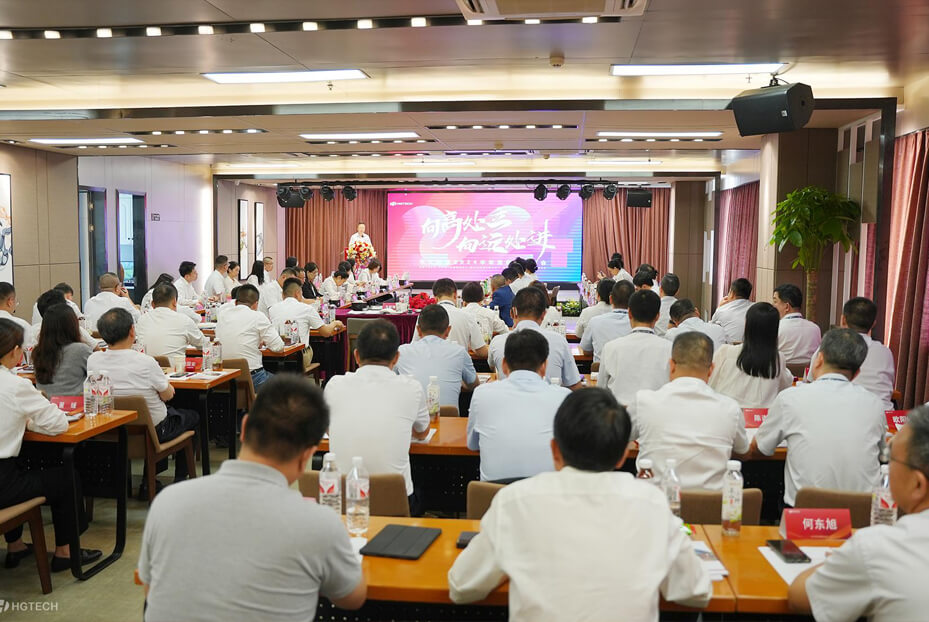HGTech Holds 2024 Mid-Year Business Operations Conference
2024-07-19
On July 19th, HGTech convened its mid-year business operations conference to review the achievements of the first half of the year, objectively analyze existing issues and improvement paths, and plan and deploy operations for the second half of the year. Attendees included Ma Xinqiang, Party Secretary, Chairman, and CEO of HGTech, along with members of the management team, representatives from subsidiary company management teams, and key personnel.

The conference, chaired by Vice President Xiong Wen, featured analyses and summaries by general managers of primary subsidiary companies on the completion of various operational management indicators and key work initiatives for the first half of the year. They also outlined plans for the second half of the year.
In the first half of this year, amidst the accelerating wave of new technologies reshaping industries, China's economy is undergoing a profound transformation from high-speed growth to high-quality development. HGTech has overcome various uncertainties' adverse impacts, focusing on deep exploration of new technologies, markets, and fields. They have anchored their development on two major tracks: new energy and digital empowerment, maintaining a steady development momentum. Key achievements included the development of strategic new products such as intelligent gas sensors, automotive environmental perception integrated sensors, and a new generation of WPTC heaters, diversifying product layouts. They consolidated their positions in home appliances and automotive sectors, aggressively penetrated photovoltaic energy storage and power battery markets, and significantly accelerated overseas market expansion. In connectivity business, they seized opportunities in the AI data center market, steadily improving their product matrix with notable advancements in silicon photonics, coherent optics, and LPO optical modules, with substantial sales growth in the data communication product line in the second quarter. Their smart manufacturing business integrated resources, solidifying their "industry-leading, specialized, and innovative" products under the "industry + major customer" model, demonstrating brand strengths in fields like 3C, marine vessels, and new energy, with sustained growth in overseas sales.

Chairman Ma Xinqiang acknowledged the achievements of various business entities in the first half of the year, focusing on annual business plans and key aspects. He objectively evaluated and analyzed achievements, existing problems, and challenges from the perspectives of reshaping a high-quality management team, enhancing innovation capabilities, globalized operations, constructing a "high-quality" system, and compliance. He emphasized that innovation is the lifeline for the survival and development of the enterprise. The Central Research Institute will continue to position itself as a "platform for gathering innovation resources, a gathering place for innovative talents, and a source of innovation." They will introduce, cultivate, and effectively use doctoral talents, actively develop next-generation technologies, and ensure continuous innovation investment across subsidiary companies. CTOs will coordinate the overall deployment of common and key technologies across subsidiary companies, scientifically plan and conduct pre-research on future technology directions, and comprehensively coordinate innovation in product lines. He highlighted the need to deepen strategies for key industries such as AI computing power, marine vessels, and automotive components for major clients, leveraging overseas manufacturing base layouts to promote local talent development and establish effective overseas talent management systems. They will fully expand new growth spaces while strengthening product lifecycle quality management, enhancing asset quality, and compliance management.
During the meeting, the International Business Department and Audit Department presented specialized reports on globalized operations and internal control management respectively.
